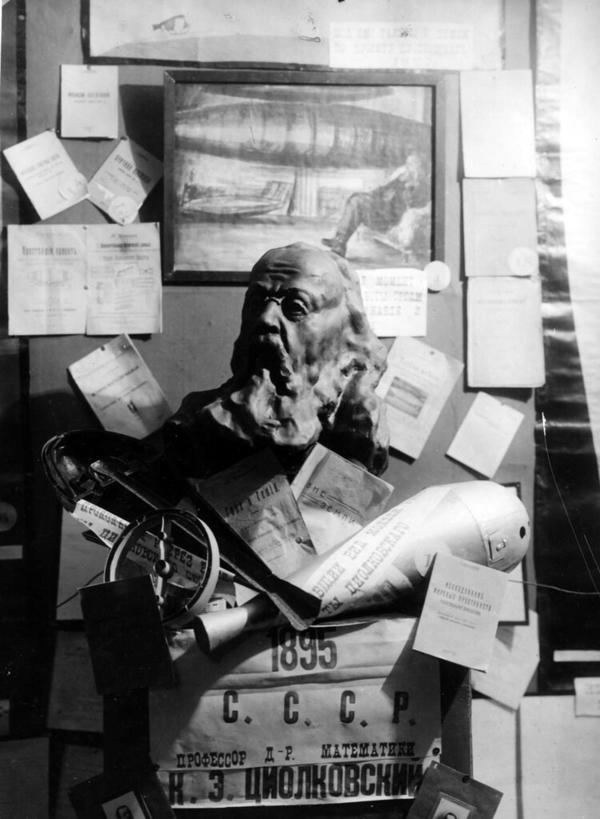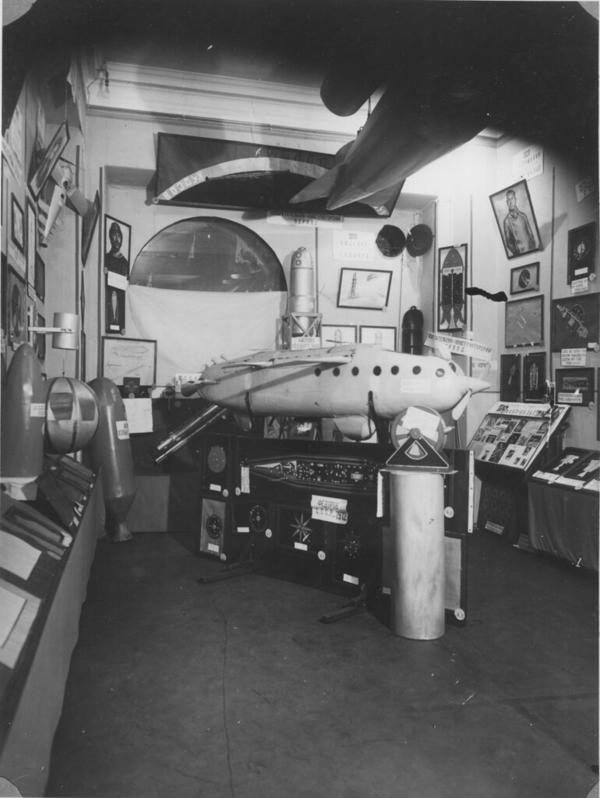The museum exhibits a copy of the only intravitam sculpture of Konstantin Tsiolkovsky, who was 70 years old at the time of its creation. This copy was performed by the original artist Joseph Arkhipov. In September 1970, this sculpture was completed and delivered to the homeland of Tsiolkovsky, in Izhevskoye.
The museum also contains a magnetic film of Arkhipov’s memories of meetings with Tsiolkovsky and working on the sculpture. The story of the creation of the bust began in 1927, when the Association of Inventors for Inventors (AIIZ) offered to organize an exhibition of models of spacecraft and mechanisms in Moscow. It is not known who initiated it, but the idea was met with warm approval from all the members of the association. Many national and foreign scientists responded to the invitation to participate in the exhibition. The exhibition was to be located in two halls with a total area of 70 square meters. The exhibition decoration was being prepared day and night.
Konstantin TsiolkOvsky conducted lively correspondence with the organizers. Correspondence was exchanged almost every day. It was then that a young artist Joseph Archipov planned to create a plaster bust of the scientist. To this end, he visited Kaluga several times to see a scientist, doing pencil sketches and sketches. Konstantin Tsiolkovsky did not like this idea, he often refused to pose, not wanting to waste time, and would say with discontent: “Don”t make an idol out of me”. However, Arkhipov managed to finish the work.
The exhibition opened on April 24, 1927. Four sections of the exposition chronicled the evolution of the idea of interplanetary messages from the fantasy projects of Jules Verne and Herbert Wells to the theoretical works of Konstantin Tsiolkovsky, the engineering calculations of Friedrich Zander and the first experiments of Robert Goddard.
The central section was dedicated to Tsiolkovsky’s body of work. It was composed of the works of a scientist, plans and models of rockets and the sculpture bust of Tsiolkovsky. The exhibition of Tsiolkovsky’s work constantly had many visitors. Within two months since its opening about 12,000 people visited the exhibition.
The museum also contains a magnetic film of Arkhipov’s memories of meetings with Tsiolkovsky and working on the sculpture. The story of the creation of the bust began in 1927, when the Association of Inventors for Inventors (AIIZ) offered to organize an exhibition of models of spacecraft and mechanisms in Moscow. It is not known who initiated it, but the idea was met with warm approval from all the members of the association. Many national and foreign scientists responded to the invitation to participate in the exhibition. The exhibition was to be located in two halls with a total area of 70 square meters. The exhibition decoration was being prepared day and night.
Konstantin TsiolkOvsky conducted lively correspondence with the organizers. Correspondence was exchanged almost every day. It was then that a young artist Joseph Archipov planned to create a plaster bust of the scientist. To this end, he visited Kaluga several times to see a scientist, doing pencil sketches and sketches. Konstantin Tsiolkovsky did not like this idea, he often refused to pose, not wanting to waste time, and would say with discontent: “Don”t make an idol out of me”. However, Arkhipov managed to finish the work.
The exhibition opened on April 24, 1927. Four sections of the exposition chronicled the evolution of the idea of interplanetary messages from the fantasy projects of Jules Verne and Herbert Wells to the theoretical works of Konstantin Tsiolkovsky, the engineering calculations of Friedrich Zander and the first experiments of Robert Goddard.
The central section was dedicated to Tsiolkovsky’s body of work. It was composed of the works of a scientist, plans and models of rockets and the sculpture bust of Tsiolkovsky. The exhibition of Tsiolkovsky’s work constantly had many visitors. Within two months since its opening about 12,000 people visited the exhibition.






